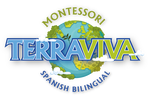MONTESSORI AND FOREST SCHOOL
Lower and Upper Elementary
Join our community!
Lower Elementary/Forest Runners
|
Upper Elementary/Forest Rangers
|
Lower Elementary/Forest Runners
|
Upper Elementary/Forest Rangers
|
